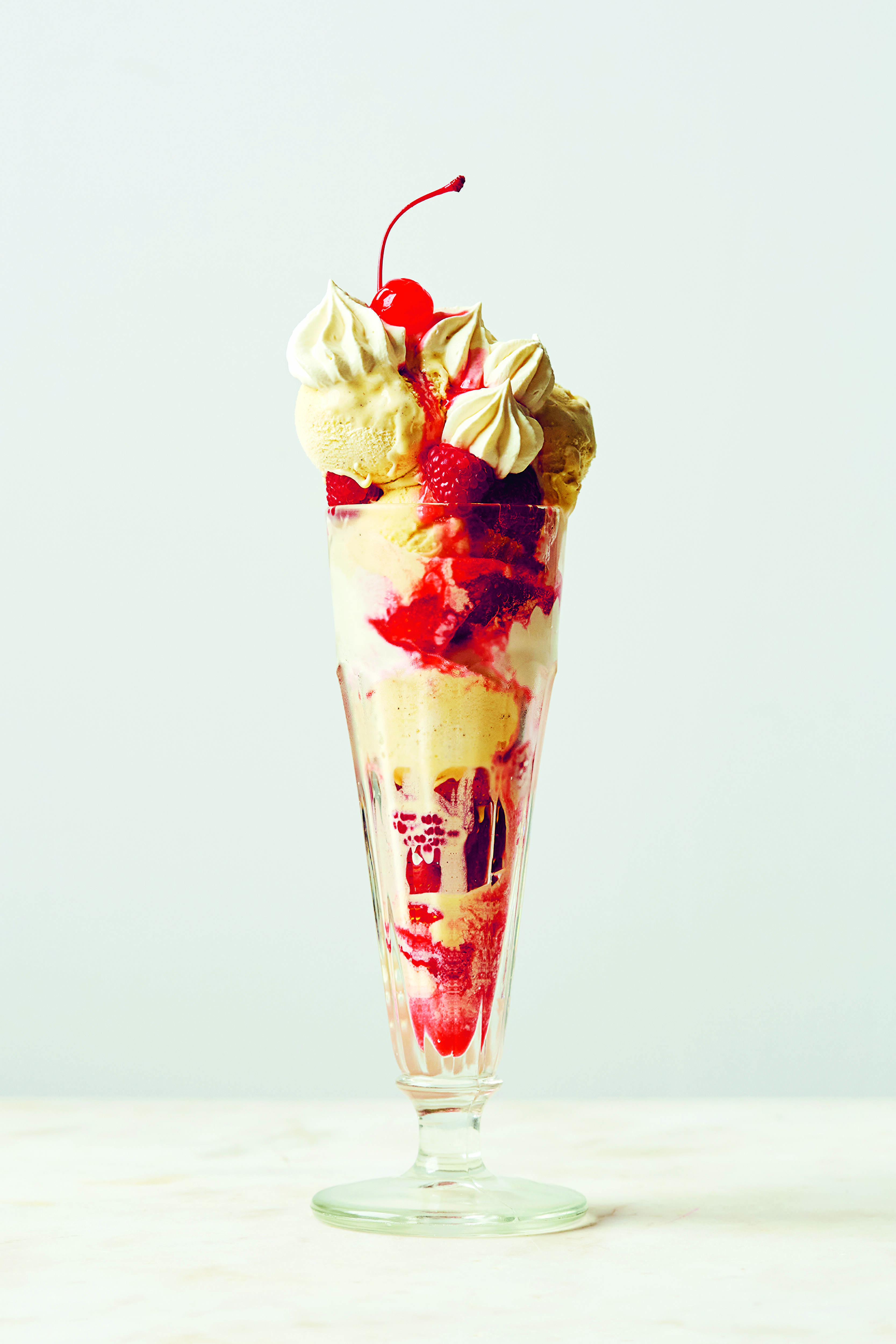
The New York dessert that's now pretty much British
The British Cookbook explains how The Knickerbocker Glory found a new home - on the other side of the Atlantic
In The British Cookbook, the author and food historian Ben Mervis feeds readers an unending course of tidbits drawn from the foodways of England, Wales, Scotland, and Northern Ireland, uncovering this cuisine’s surprising roots, boiling down its stories and finessing its recipes.
He covers the culinary influences of Celtic clans and the Roman Empire, the Highland Clearances, the invention of the steam engine, and the Second World War, while also providing authoritative recipes for fish and chips, shepherd’s pie, sticky toffee pudding, Welsh Rarebit, Chelsea buns, haggis, alongside many other dishes.
Britain’s rich coastal waters, its mild climate, and its proximity to Europe have all influenced the way its countrymen and women cook and eat. However, there are a few more recent dishes that make their way into this country’s restaurants, cafes and kitchens from further afield.

Author Ben Mervis
In Britain the term ‘knickerbockers’ is generally used to describe short, baggy breeches; a smaller number of Brits understand that the word was popularised by the American writer Washington Irving in his 1809 satire, A History of New York, and soon became a synonym for a Manhattanite (the garment, supposedly worn by Irving’s clan of old Dutch New Yorkers, the Knickerbockers, arose from the author’s coinage). The city’s basketball team, the Nicks, takes its name from Irving’s appellation, as did the city’s Knickerbocker Hotel, which opened on Times Square in 1906.
That hotel’s fetching redbrick and creamy terracotta facade may have led the city’s earliest makers of a popular berry ice cream dessert to dub their dish a ‘Knickerbocker glory.’
Whatever the derivation, Mervis confirms that this American ice-cream sundae, which first found American fame in the early 1900s, “has stayed popular in the UK long after it faded into obscurity across the pond.”

The British Cookbook
The book’s recipe, which calls for sugar, heavy cream as well as slivered almonds, two flavours of ice cream, raspberries and other soft fruits, instructs cooks to serve the dish in tall glasses – perhaps a nod to the dessert’s soda-fountain origins. Still, it's pretty enjoyable however you eat it; and no short pants are required. To get the full recipe, as well as much more besides, order a copy of The British Cookbook here.